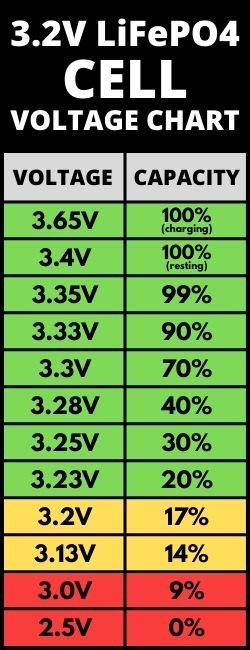lnanek said:
192Ah is 13,714mAh per p-group. 4.1V is 89% charged, so 1,509mAh left to charge. 1,509mAh divided by 100mA equals 15 hours to balance.
Nice math!
but if
battery is 192Ah and supposing use
3000mAh cells , it means 192Ah/3 equals
64P battery
soo (top@4,1V) means 10% of 3000mAh equals 300mAh left, but U have 64P-elements battery. This means 64Px300mAh equals 19200mAh aprox ~20Ah (anyway 10% of 192Ah is aprox 20Ah)
soo if U
charge 20Ah with just only 100mAh
gess?? it takes some math 20k/100 is
200hours balance >> 15hours (your math)
correct me if I'm wrong!
200 hours balancing for delta 0,1V difference at S-elements!! a year has 365days, so 200hours is just 8,3days or 2,23% of a year time balancing..

Some people say that leaving a charger connected many days to a debalced battery it would equalize it.. Is this real or a conspiracy?
Most top bms cut charge occurs when cell reaches 4,23V
Soo most chargers turn off when bms cut top charge at 4,23V at any P-element (maybe daly bms will keep it charging until 5V..dont know

)
This means no balance function from charger to battery if bms cuts.
I have a theory.. maybe not works

example you have a 42V 10S batttery, soo use x3 diodes at positive of charger, it will reduce top charge to 80% (4,0V per cell 40V total), but it does not allow to bms cut. soo leave that 40V source to 42V 10S battery many days to see if it balances(for a small debalance maybe ok delta 0,1Volts ,but if big debalce level bms will cut and you have to go inside battery to fix tha P/P's-group problem)
Anyone could test this to a debalanced battery?? Is educative :thumb:
using Arduino/ESP32 coding to develop something to monitor battery S-elements voltage?..



